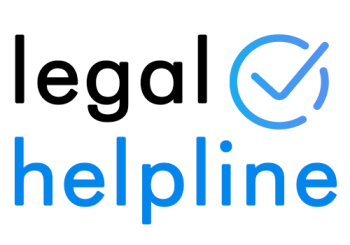This is a guide on the whether you could seek compensation for injuries sustained while manual handling and the claims process involved in doing so. It will discuss the criteria for making a personal injury claim, the time limits for starting legal proceedings and the evidence that could be used to strengthen your case.

Statistics from the Health and Safety Executive (HSE) showed that handling, lifting or carrying comprised 18% of non-fatal injuries to employees. This is the second most common type of workplace injury behind slips, trips or falls on the same level. We will provide examples of how a manual handling accident could occur and the injuries that could be sustained as a result later on in our guide.
Additionally, we will discuss the compensation you could be awarded for your injuries if you make a successful claim as well as how it aims to address the different ways you have been impacted.
For more information, you can speak with an advisor from our team. They can assess whether you have valid grounds to seek personal injury compensation. If you do, they may assign a solicitor from our panel to represent your case on a No Win No Fee basis. To get in touch, you can:
- Speak to an advisor over the phone on 0333 000 0729.
- Contact us using our online claim form.
- Message us on our live chat feature below.
Select A Section
- What Is The Manual Handling Claims Process In The UK?
- Who Could Make A Manual Handling Claim?
- How Could Your Employer Be Liable For A Manual Handling Accident?
- How Are Settlements Calculated In Accident At Work Claims?
- Make A Manual Handling Claim Today With No Win No Fee Solicitors
- Learn More About The Manual Handling Claims Process In The UK
What Is The Manual Handling Claims Process In The UK?
When seeking compensation for injuries sustained after manual handling, the claims process can involve gathering evidence to support your case. There are several steps you can take to gather evidence, such as:
- Seeking medical attention for your injuries and requesting a copy of your medical records.
- Making a request for CCTV footage of the accident.
- Taking pictures of your injuries as well as the accident scene.
- Collecting the contact information of any potential witnesses as they could provide a statement at a later date.
- Filling out the workplace accident book and getting a copy of the incident report.
Additionally, you may wish to seek legal representation from a solicitor experienced in handling claims for manual handling accidents. If this is the case, you can get in touch with an advisor to discuss whether you’re eligible to work with a solicitor from our panel.
Who Could Make A Manual Handling Claim?
In order to have a valid grounds to pursue a personal injury claim, you must be able to demonstrate negligence. This constitutes the following:
- Firstly, you were owed a duty of care.
- Secondly, this duty was breached.
- Thirdly, this breach resulted in your injuries.
An employer’s duty of care is outlined under the Health and Safety at Work etc. Act 1974 (HASAWA), which states that employers must take reasonable and practicable steps to provide a safe workplace and prevent injuries to employees.
Additionally, the Manual Handling Operations Regulations 1992 outlines the more specific responsibilities employers have with regard to manual handling in the workplace. It dictates that employers must avoid, so far as is reasonably possible, manual handling activities that pose a risk of harm to their employees. Where this is not possible, risk assessments should be carried out to identify and reduce the risks.
A failure to do so is a breach of their duty of care. If this leads to you sustaining an injury, you may be eligible to claim compensation for the ways it has affected your life.
Time Limits To Claim
In addition to ensuring your case meets the criteria laid out above, you need to ensure you start your claim within the limitation period set out in the Limitation Act 1980. Generally, the time limit is three years from the date of the injury. However, exceptions can be made in some situations.
To find out how long you have to claim for an accident at work, get in touch on the number above.
How Could Your Employer Be Liable For A Manual Handling Accident?
There are several ways a manual handling accident could occur in the workplace. For example:
- Inadequate training: Your employer may have failed to provide you with adequate manual handling training before assigning you with the task of moving objects around a warehouse. As a result, you use an incorrect lifting technique and sustain a soft tissue injury to your back.
- Failure to assess the risks: Your employer may have failed to carry out a risk assessment before assigning you a manual handling task. As a result, you strain your wrist, neck and shoulder after lifting and pulling stock over the maximum weight for your height around a factory.
- Failure to reduce the risks: Your employer may have been aware of slip and trip hazards that posed a risk to employees moving objects around an office but failed to adapt the working environment to reduce these risks. As a result, you may have tripped over and sustained an arm injury and elbow injury.
It’s important to be aware that employers may not always be liable for the accident in which you sustain harm. In these cases, you would be able to make a personal injury claim.
To discuss when you could be eligible to seek compensation for harm you have experienced while manual handling and the claims process involved in doing so, get in touch on the number above.
How Are Settlements Calculated In Accident At Work Claims?
Following a successful claim, compensation can be awarded from up to two heads of claim. One of the heads is known as general damages; this accounts for the pain and suffering caused by your injuries.
Below is a table of guideline compensation brackets collated from the Judicial College Guidelines (JCG), a tool used by solicitors to value general damages.
Compensation Table
| Injury | Severity | Value | Notes |
|---|---|---|---|
| Neck | Severe (ii) | £65,740 to £130,930 | Damage to the discs in the cervical spine causing disabilities of a considerable severity. |
| Neck | Severe (iii) | £45,470 to £55,990 | Severe soft tissue damage and/or ruptured tendons that cause chronic conditions as well as a significant and permanent disability. |
| Neck | Moderate (i) | £24,990 to £38,490 | Serious soft tissue injuries affecting both the neck and the back. |
| Back | Severe (iii) | £38,780 to £69,730 | Soft tissue injuries causing chronic conditions. Despite treatment, often surgery, disabilities persist. |
| Back | Moderate (ii) | £12,510 to £27,760 | Ligament and muscle disturbance leading to backache. |
| Arm | Less Severe | £19,200 to £39,170 | A substantial degree of recovery has occurred or it will be expected despite there having been significant disabilities. |
| Shoulder | Moderate | £7,890 to £12,770 | Soft tissue injuries where symptoms are minimal and persist for more than two years. |
| Elbow | Moderate | Up to £12,590 | Injuries, such as lacerations, where damage or function impairment is not permanent. |
| Wrist | Very Minor | £3,530 to £4,740 | Soft tissue injuries that require a bandage or plaster for a matter of weeks. |
Please note that each claim is unique, with different factors affecting the award’s outcome. They should not be taken as guaranteed amounts and you should only use them as a guide.
Calculating Special Damages In Workplace Accident Claims
The other head of claim is known as special damages, which accounts for the monetary losses incurred from an injury. For example, you could claim back the cost of:
- Lost earnings
- Medical expenses
- Travel costs
Evidence can help to prove these losses, including payslips, travel tickets and receipts.
For a personalised estimate of how much you could be owed following a successful claim, get in touch using the number above.
Make A Manual Handling Claim Today With No Win No Fee Solicitors
Our panel of personal injury solicitors can offer their services under a type of No Win No Fee agreement. There are different types including a Conditional Fee Agreement, which is the type of contract the solicitors from our panel could offer.
Under a CFA, there will generally be no upfront or ongoing fees to pay for your solicitor’s services. Also, if your claim has an unsuccessful outcome, there will be no fee to pay for the work they have completed on your case.
In the event of a successful claim, your solicitor will deduct a minor success fee from your compensation. This is taken as a small percentage. However, the Conditional Fee Agreements Order 2013 restricts how much they can take.
If you are interested in making a claim with a solicitor from our panel, you should contact our advisors for free. They can also provide further guidance on the manual handling claims process. To get in touch, you can:
- Speak to an advisor over the phone on 0333 000 0729
- Contact us using our online claim form
- Message us on our live chat feature below
Learn More About The Manual Handling Claims Process In The UK
For more of our guides:
- How to claim compensation for a forklift truck accident
- Conveyor belt accident claims
- How much could I claim for a construction accident?
For more external resources:
- GOV.UK – Request CCTV footage of yourself
- NHS – How to get your medical records
- HSE – Accident book at work
Thank you for reading this guide on when you could be eligible to seek compensation for injuries sustained after manual handling and the claims process involved in doing so. For more information, you can get in touch using the details provided above.
Written by MWH
Edited by MMI




